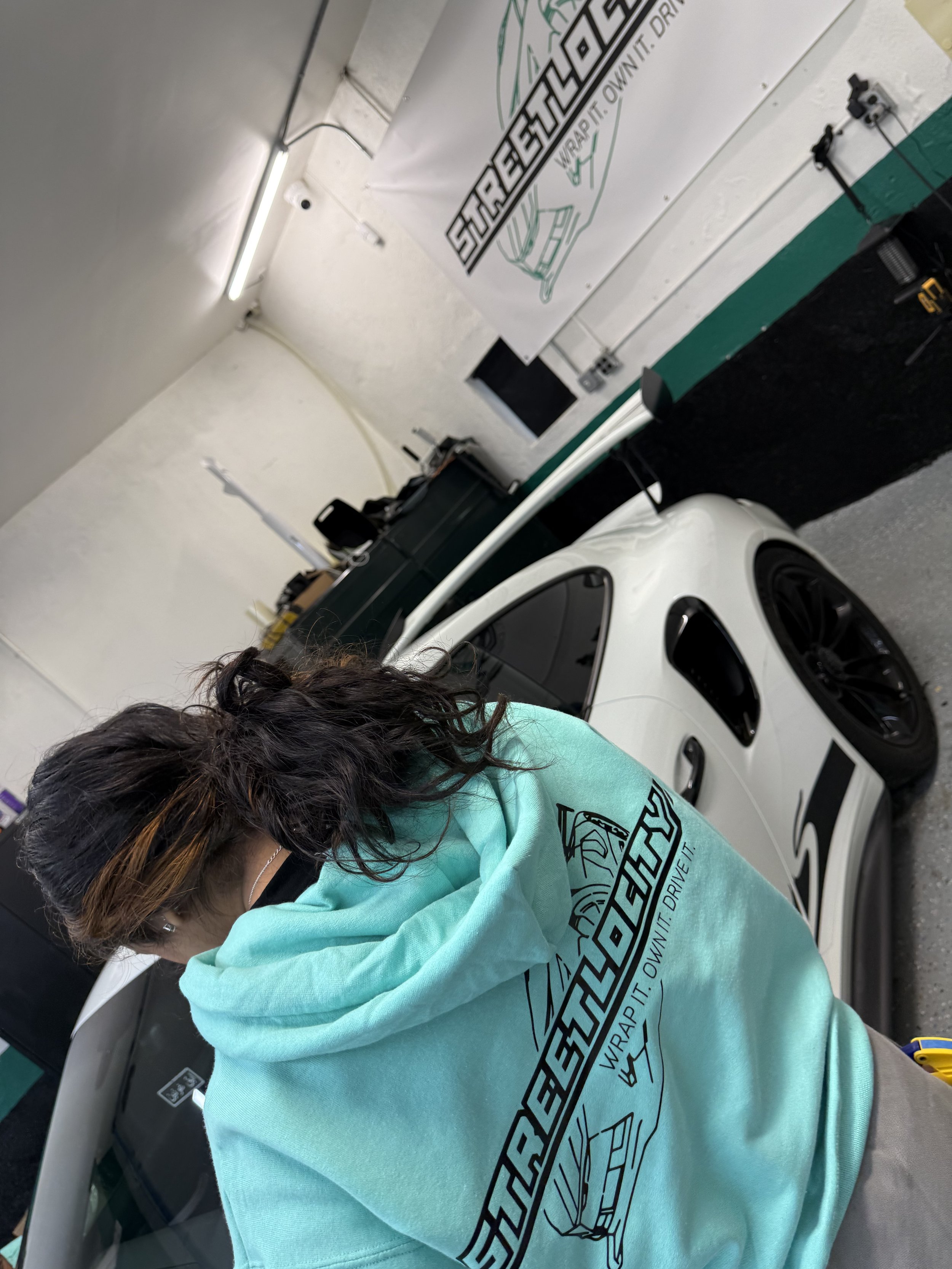2-Day Vinyl Wrap Training Curriculum
Day 1: Foundational Skills & Basic Applications (8 AM - 4 PM)
Morning (Introduction & Vinyl Fundamentals)
Review of vinyl types relevant to vehicle wrapping (cast vs. calendared).
Understanding different finishes (gloss, matte, satin) and their impact on application.
Discussion of key vinyl properties (conformability, adhesion, durability).
Overview of common vehicle wrap applications and considerations.
Detailed instruction on proper washing and decontamination techniques.
Introduction to paint correction and its importance for wrap adhesion and finish.
Hands-on practice with cleaning and surface prep on sample panels.
Safe and effective use of knifeless tape for clean lines.
Afternoon (Focus: Application & Basic Panel Wrapping):
In-depth explanation and demonstration of dry vs. wet installation methods, including when to use each.
Hands-on practice with heat shrinking techniques for curves and contours.
Importance and methods of proper post-heating for adhesion and longevity.
Step-by-step guided practice on wrapping a hood or roof panel.
Applying techniques to more complex curved sections of a hood or roof, focusing on efficient material handling.
Day 2: Advanced Applications & Finishing (8 AM - 4 PM)
Morning (Focus: Complex Panels & Seam Management):
Detailed instruction and demonstration on wrapping bumpers, mirrors, and spoilers.
Emphasis on understanding panel geometry and strategic application.
Hands-on practice on these more challenging components.
Beginner introduction to the concept of seams and when they are necessary.
Afternoon (Focus: Advanced Techniques, Finishing & Troubleshooting):
Techniques for conforming vinyl to deep curves and complex shapes without overstretching or damaging the material.
Hands-on practice with heat guns and application tools on challenging contours.
Various tuck-in methods for clean and secure edges.
Best practices for finishing details around trim and edges.
Troubleshooting Common Issues:
Identifying and addressing wrinkles, bubbles, lifting, and contamination during the application process.
Techniques for correcting minor imperfections and preventing future problems.
Q&A and Course Wrap-up:
Open forum for questions and discussion based on the two days of training.
Review of key concepts and best practices.













